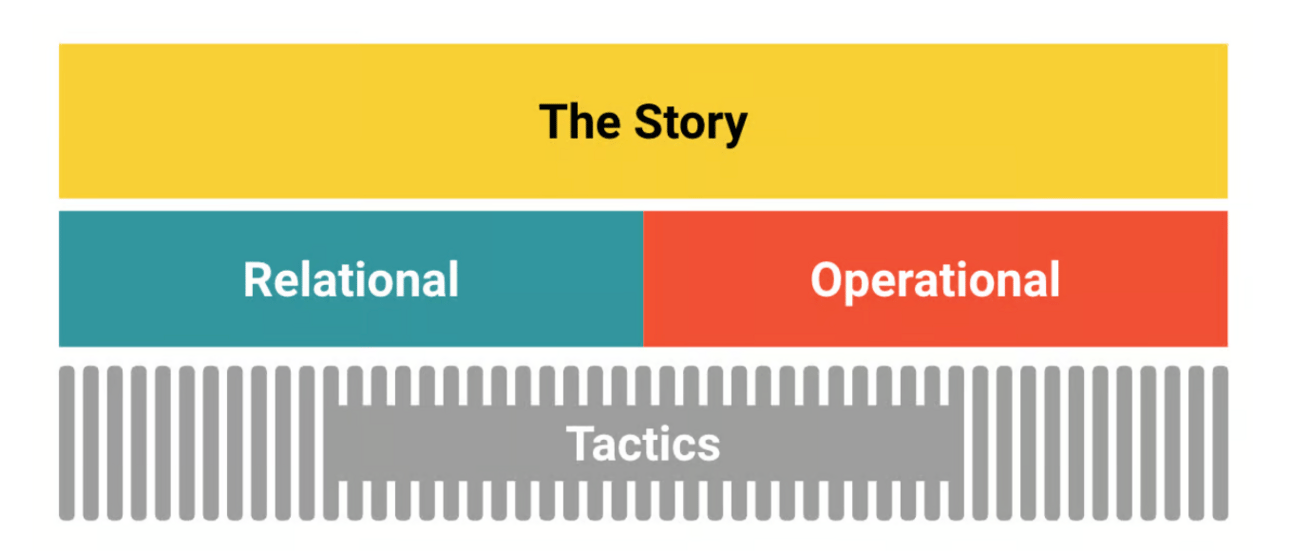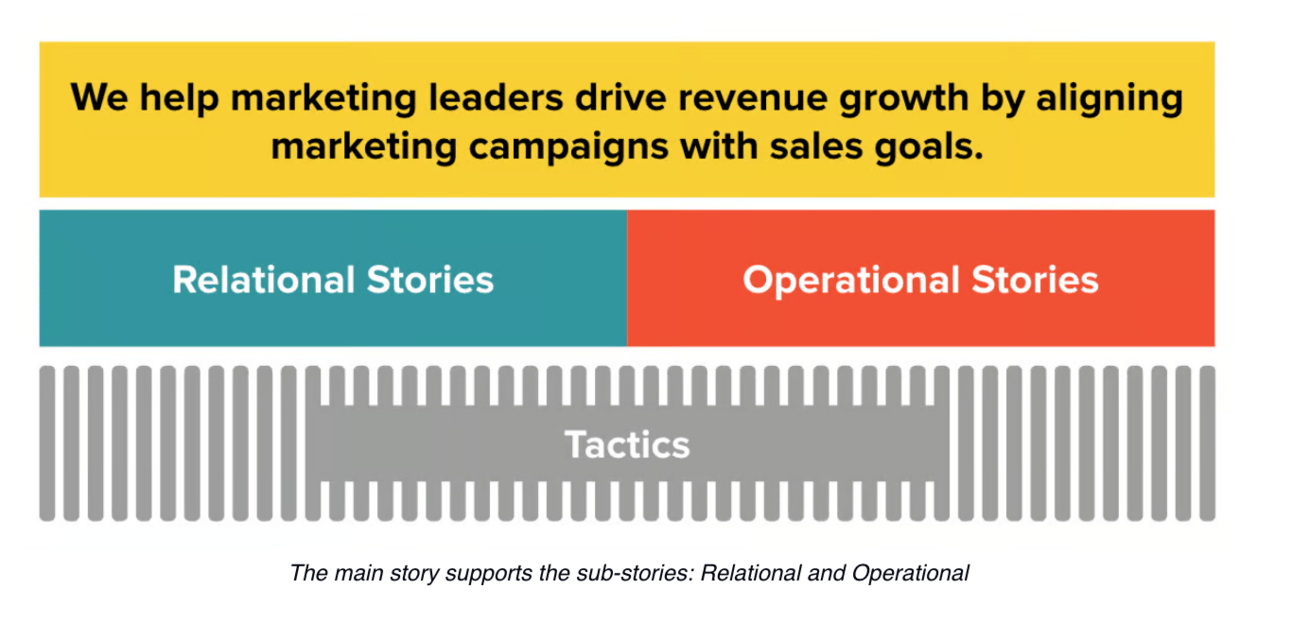- Revenue Diaries
- Posts
- Revenue Diaries Entry 36
Revenue Diaries Entry 36
Inside: Storytelling like Stephen King and the $750M Content Marketing Framework
Last week, I wrote about legacy… about Grandma Joan, Climb for the Cure, and what it means to build something that lasts. This week, we’re shifting gears but staying in the same lane.
Because great marketing isn’t just about what you say, it’s about what people see when they hear it. This week, we talk a little bit about storytelling and the framework I’ve used for a decade to help create over $750 million in pipeline using… yes… you guessed it…
It all starts with the story.
♥️ kyle
On Marketing that Sticks like Stephen King
Hello from somewhere in Tennessee, halfway through a long drive home from Hilton Head. Audiobook rolling. Kids should be asleep but instead they are playing Minecraft. And man, was I deep into the story. And I caught myself doing what I think we all do when a story grabs us:
I wasn’t just listening to the story. I was watching it. You know what I’m talking about, when you are reading or listening to a book, and you map the scene in your head.
I could see the characters, the setting, and the weather. I could feel the tension in a conversation that wasn’t mine. My brain was doing what it always does with great stories: building the visuals, filling in the blanks.
And like I always do, I started thinking about work. Because this is exactly what good marketing should do. I should create something visual.
But not in the sense of brand colors, graphic design, or adverts. I mean truly visual. It should help someone SEE.
Not your product or service, but their life WITH your product or service.
The best campaigns, the best messaging, the best positioning… they all create space for someone else to imagine something new. Something better. A future version of themselves, equipped with your solution.
That’s marketing. That’s the job.
And who better to teach us about marketing and building a great story than the GREAT Stephen King. He said it better than I ever could in his book On Writing:
“Description begins in the writer’s imagination, but should finish in the reader’s.”
That’s it. That’s the whole game.
It’s not about cramming every feature and benefit into your messaging. It’s about creating a scene in someone else’s head. Just enough detail to let them see it. Feel it. Finish the thought on their own.
“Writing is telepathy,” King also wrote. Damn it, King. You are a KING for a reason. Marketing is telepathy.
When you get it right, you’re not just communicating; you're connecting. You’re transmitting a vision of what could be.
And this is where most of us SCREW it up. Your messaging, positioning, and marketing don’t paint a scene. It doesn’t have a vision.
It just checks a box. Believe me, I know. I’ve done it more times than I care to count.
We use words like "enablement" and "optimization," and "empowerment" that sound big, but don’t show anything. Nobody lies awake at night imagining a future where they’re fully enabled, empowered, or optimized.
But they do imagine:
not getting another email from their VP asking where the leads are
feeling prepared for their next big onboarding session
having time to eat dinner with their kids because the dashboard actually works
closing their laptop at 5pm without guilt
walking into a quarterly business review with real numbers that actually make sense
onboarding a new teammate without spending four hours rebuilding a process from scratch
being able to say “yes” to a new project because they finally have the capacity
seeing a Slack message from sales and knowing exactly how to help
That’s the visual. That’s the movie playing in their head. That’s our job.
So how do you get better at helping your customer see themselves in your story? You learn to set the scene. Like a writer, you start with just enough (and you buy Mr. King’s book):
What does their life look like before your product?
What’s the tension? The friction? The conflict?
And what’s the moment it all shifts?
Then you make them the protagonist. Not your software. Not your AI model. Them. You give them a chance to imagine the before and the after. Not just as a chart in a board deck, but as a feeling. A moment.
That audiobook I was listening to? I couldn’t tell you every line. But I can still see the scene it painted in my mind.
That’s what great stories do. And that’s what great marketing can do, too.
On How I’ve Crafted Stories that Created $750M in Pipeline
Okay. It’s time for a call-back, in honor of Stephen King, and how people SEE your marketing. Not see it in a brand design or campaign brief. See it in their minds.
What picture are you helping them build? What scene are they starring in? What do they feel when your product comes into view?
That’s the magic. And it’s not magic at all. It’s a system.
That’s what the CREATE framework is designed to do. I introduced it earlier this year as a way to bring structure, repeatability, and clarity to content marketing that works. It’s based on $750M worth of campaigns, tested across software, venture capital, and everything in between.
Let’s break it down again:
Craft the Story
Research with Customers
Execute with Your Team
Amplify the Content
Track the Success
Evolve the Story
And today, we’re going to revisit the foundation: Craft the Story, because it’s where content begins.

Every great content marketing program starts with a clear, focused story. Not five ideas. Not a brainstormed list of “themes.” A single story. One sentence that puts your customer first and centers them in the outcome.
Like: “We help early-stage startups with distributed teams build better software faster without unnecessary overhead.”
You start there. And yes, it feels simple. But that’s the point. When you do the hard work of getting to one sentence, everything else gets easier:
Your team aligns.
Your campaigns stay consistent.
Your message hits harder.
I use a simple structure to get to that story:
Who do you help? (The persona)
How do you help them?
What’s the outcome?
Example: We help marketing leaders drive revenue growth by aligning campaigns with sales goals.
Once you have that one-line story, you can expand into what I call relational and operational sub-stories.

Relational stories speak to the human side of your buyer. Stress. Team dynamics. Trust. Burnout. Aspiration. They help your audience feel seen and understood.
Operational stories speak to the measurable side. Pipeline. ROI. Headcount. Efficiency. These stories help them rationalize the decision.
If you lean too far into relational, your brand feels soft. If you only use operational, your brand feels cold. The balance is the goal.
Relational stories build the connection. Operational stories build the case. You need both.
Let’s go find some stories.
For Relational:
Listen to sales calls. Not just what they say, but how they say it.
Read social posts from people in the role.
Ask open-ended questions like, “What’s the hardest part of your week?”
For Operational:
Ask your sales and CS teams what objections or pain points they hear most.
Dig into customer data to find proof of results.
Review case studies or testimonials to see what customers say actually matters.
The best content marketers are part journalist, part analyst. They don’t just guess what story to tell. They go find it.
One quick reminder.
If your story doesn’t help your customer see themselves, it’s not ready. If it doesn’t reflect what they care about, it’s not going to land.
Crafting the story is not just a strategic step. It’s a service to your customer. It gives them a scene to step into. A moment to imagine. A path forward.
That’s how you make your content stick. That’s how you build content that scales.
And that’s where CREATE begins.
And if Stephen King taught us anything, it’s this: a great story doesn’t just inform, it transports. Your job is to make sure the story you’re crafting gives your customer something worth seeing.
Not just in their inbox or their browser, but in their mind.
